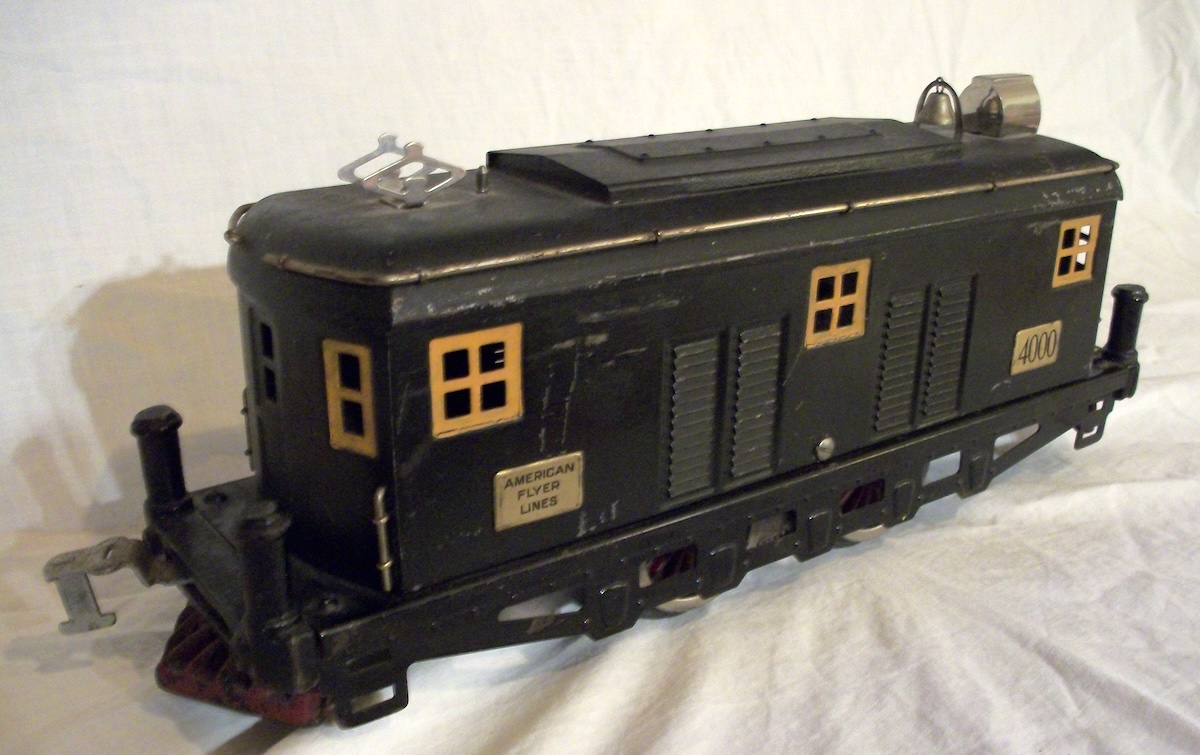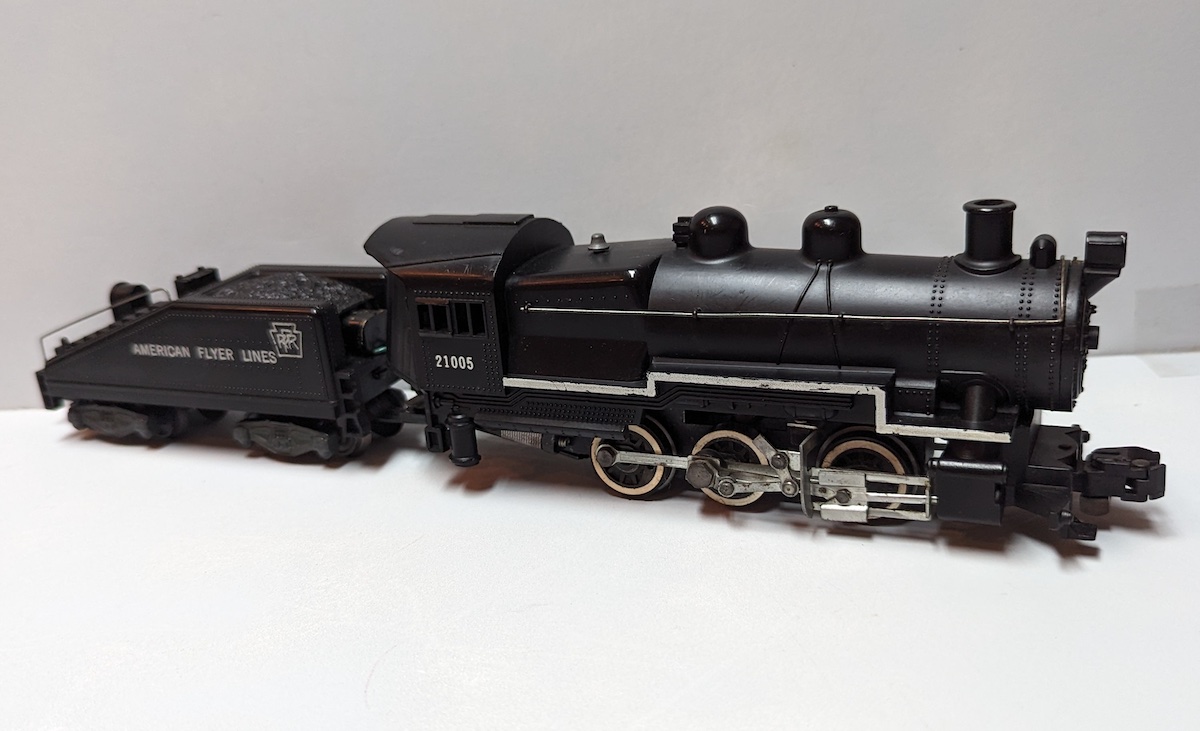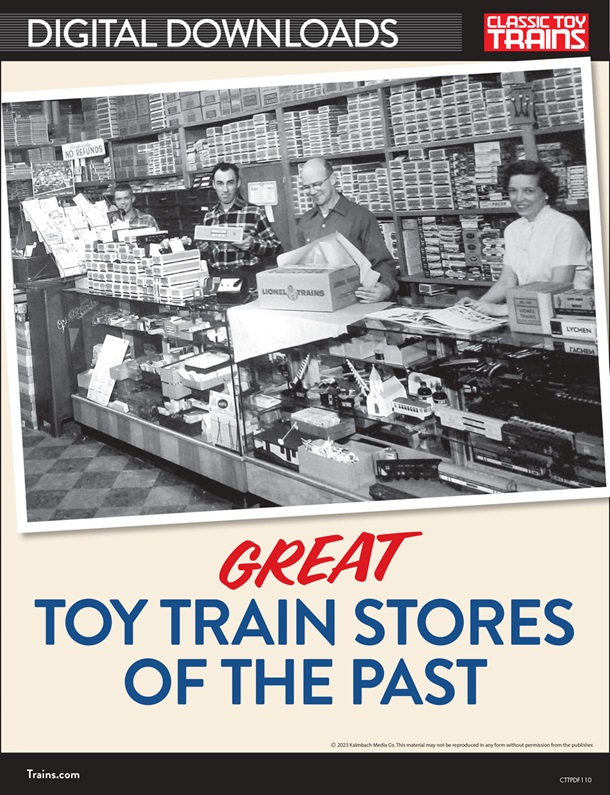The late 1950s and early 60s were a time of the Cold War, Sputnik, and the Mercury and Gemini space programs. Lionel’s entry into space-related toys was a sign of our nation’s early endeavors with space exploration.

One of the first space train accessories appeared on the cover of the 1958 Lionel catalog. Towering over a New Haven F3 locomotive was the No. 175 Rocket Launcher. Cataloged from 1958 to 1960, the 175 was a model of a missile gantry similar to the type used at Cape Canaveral, Fla. A tan sheet metal base held a motor that vibrated when activated, causing the nearly 17 inch gantry to move away from the plastic red and white U.S. Navy rocket. The rocket was modeled after the three stage solid fuel powered Minuteman missile used by the Air Force.

The Navy rocket was also used on the No. 6175 Flatcar with Rocket, cataloged from 1958 to 1961. During Lionel’s production of the No. 175 Rocket Launcher, the United States successfully launched nine satellites into orbit.
Lionel reused most of the parts from the 175 to build the No. 413 Countdown Control Panel, cataloged in 1962 only. The 413 was a replica of a launching control panel that included a countdown clock, and it could be used with any Lionel accessory that used a pushbutton. Unfortunately, the 413 wasn’t a big seller and it’s considered a scarce item today.
The first U.S. satellite, Explorer l, launched in January 1958, fell and burned up in the atmosphere on March 31, 1970. It was the first to carry scientific instruments.

In 1961, Lionel introduced the No. 3519 Remote Control Satellite Launching Car, one of three satellite cars the company would release (including Nos. 3509 and 3510). While the Remote Control Satellite Car was certainly not based on a specific prototype, it was one of the best operating space cars ever produced. Manufactured until 1964, the No. 3519 had a green base and came with a yellow satellite dish and launchable satellite. After turning the spring-wound center based launching spool a few clicks, the user placed the launchable satellite upon the spool. When activated by remote control, the satellite would buzz upward like a silver and black bumblebee, sometimes up to 20 feet high!
In 1959, Lionel introduced the No. 470 Missile Launching Platform and the No. 6650 Missile Launching Car. Both used the same pivoting firing ramp design and both came with a miniature replica of a Nike-Hercules missile. The No. 470 came with a tan plastic base, a Quonset hut, and a blue movable superstructure topped by a black firing ramp to hold the resting missile. Included with the 470 was the No. 6470 Exploding Boxcar, which harmlessly “exploded” when struck by a missile or rocket by means of a mousetrap style spring mounted inside. The 6650 was constructed with the same mechanism, but was mounted to a standard flatcar instead. The 470 was cataloged until 1962 but the 6650 cataloged until 1963.
On August 3, 1958, the atomic powered submarine Nautilus became the first vessel to sail under the North Pole during “Operation Sunshine.” Nearly two years later, the first Polaris missile was launched off the coast of Cape Canaveral by a submerged nuclear submarine, the USS George Washington.

Lionel entered the race in submarine technology with an operating submarine car in 1960. The No. 3330 Flatcar with Submarine Kit came with a model submarine kit (numbered 3830), while the No. 6830 Flatcar came with a non-operating submarine (numbered 6830). The No. 3820 USMC and the No. 3830 Flat with Operating Submarine Cars came with a U.S. Navy No. 3830 Submarine. The gray Lionel sub was rubber-band powered and came with a working rudder and diving planes.

One of the more unusual locomotives Lionel produced was the No. 44 U.S. Army Mobile Launcher and the similar No. 45 U.S. Marines Mobile Launcher. Equipped with Magne-Traction and molded in light blue, the 44 carried four Little John type rockets that could be fired by remote control. Mounted in the center of the locomotive was a red firing light. Beneath the firing light, seated behind a control panel was a small rubber figure. Cataloged during the years of 1959 to 1962, the No. 44 typifies the “space age” design common in that era.

Using the same launching device as the No. 44 was the No. 6544 Missile Firing Car. Made from 1960 to 1964, the 6544 used a manually operated firing cam to launch its four rockets. This car was delicate and is difficult to find with its firing mechanism or all of its rockets intact.

Perhaps the most unusual operating car was the No. 3470 Target Launching Car, cataloged from 1962-64. This imaginative car had a white superstructure topped with a blue dish-shaped basket. A small impeller inside the superstructure would vent a continuous flow of air through a small nozzle mounted under the basket. Aninflated Lionel balloon with a target design would be suspended approximately one inch above the car as it traveled around the layout. Youngsters could aim to strike the hovering balloon with a firing accessory.
Over the years, Lionel space items have become harder to find in good or operating condition. Most of the cars and accessories were constructed entirely out of plastic and often pieces become brittle or broken.
The Lionel space trains the legacy of a time when our country accepted the challenge to explore the boundaries of space. To the historian, the space trains are the embodiment of our nation’s fervor in the early years of the space race. To the collector, they are a rare and colorful find. To the operator, they’re just plain fun.














